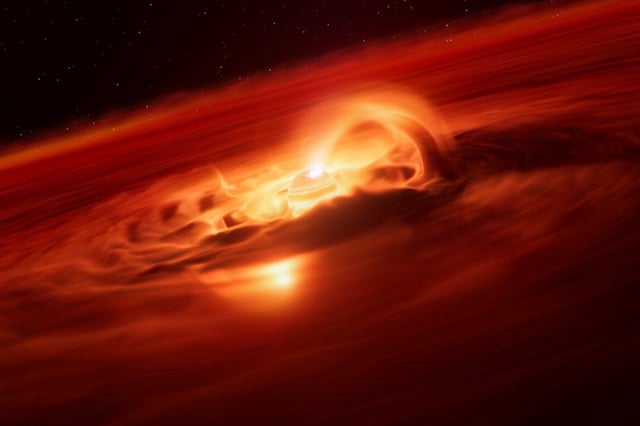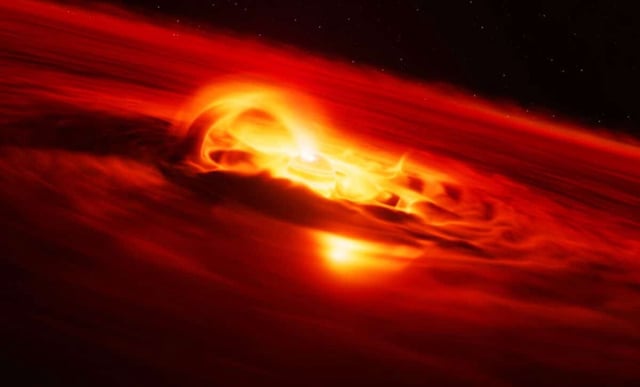Overview
- Cha 1107-7626, a free-floating object about 620 light-years away and roughly 5–10 Jupiter masses, is not bound to any star.
- The mid-2025 burst pushed the accretion rate to about six billion tons per second, the strongest recorded for a planetary-mass body.
- Across monitoring from April to August, the accretion rate rose by roughly a factor of eight before peaking in August.
- Spectroscopic data showed water vapor during the burst but not beforehand, indicating a temporary shift in the disk’s chemistry.
- Evidence of strong magnetic activity suggests material was funneled onto the object, reinforcing parallels with young stars and informing formation models reported in The Astrophysical Journal Letters.


